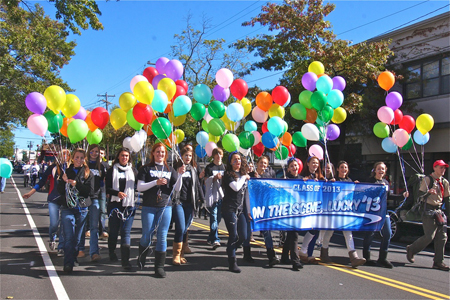Energy-efficient lighting trend gains traction on the North Fork

The switch to energy-efficient light bulbs is increasingly common on the North Fork as people recognize the move’s money-saving benefits and bask in the bucks saved on their electric bills.
Light-emitting diode, or LED, light bulbs are up to 90 percent more efficient than traditional incandescent bulbs, according to the Energy Star program, and compact fluorescent light bulbs, or CFLs, are 75 percent more efficient.
In 2009, the typical annual energy bill for a home with incandescent lighting was $2,200, according to Energy Star. About 12 percent of that, or $264, goes to home lighting.
With CFL bulbs, your lighting bill could be cut 75 percent to $66. By using all LED light bulbs, your bill could diminish 90 percent to $26.
“For homeowners, CFL is the way to go,” said Matt Ghosio, branch manager at Schwing Electrical in Riverhead.
That’s because LED bulbs are more expensive up front — a 12-watt LED lights costs about $40, while a 13-watt CFL bulb, its equivalent, costs about $30 and an equivalent 60-watt incandescent bulb costs just $2.
“LED is a bit on the pricey side, so people are slow to adopt it right away because of the initial investment,” Mr. Ghosio said. “But we are starting to see more and more people use them.”
CFLs have become more prevalent in North Fork homes, he said, but some people complain that it takes up to three minutes for the bulbs to reach their maximum brightness.
Some also don’t like the colder look of the light CFLs cast. While incandescent bulbs have a warm orange or yellow tint, which is most desirable in homes, LED and CFL lights emit colder hues of blue, green or gray. Incandescents make homes, and even people, appear more attractive, Mr. Ghosio said. Those bulbs can be found in many supermarkets, too, as they make food look more appealing.
But the downsides of incandescents can’t be ignored. Up to 98 percent of energy consumed by incandescent light bulbs is wasted as heat, not light, according to the Energy Star program. A 60-watt incandescent bulb will last about 1,000 hours, while an equivalent CFL will last 10,000 hours and an LED will last 25,000.
“You could save a ton by switching over to LED versus regular incandescent,” said Lorraine O’Fee, lighting sales associate at Revco Electrical Supply Inc. in Southold.
The Long Island Power Authority offers discounts and rebates to commercial establishments that use Energy Star-qualified LED replacement bulbs and fixtures.
Nearly 50 businesses across Long Island take advantage of the program, including the Home Depot in Riverhead and Revco in both Riverhead and Southold, according to LIPA.
Ms. O’Fee said Riverhead Building Supply recently replaced all its incandescent bulbs with LED lights.
The company “was burning 34,400 watts, and now they’re using 10,358 watts,” she said. “They’re saving a ton and they’re getting more light.
“Commercially, it makes a huge, huge difference,” she added, since many lights are on throughout the day.
Energy-efficient bulbs make a difference in all types of indoor spaces, since the average American spends 90 percent of his or her time indoors, according to the Environmental Protection Agency. There’s no doubt lights are on for much of that time.
Ms. O’Fee said homeowners and commercial operations alike are increasingly opting for CFL and LED lights — and even halogen lights, which use 10 to 40 percent less energy than incandescent.
“It doesn’t make sense not to,” she said





